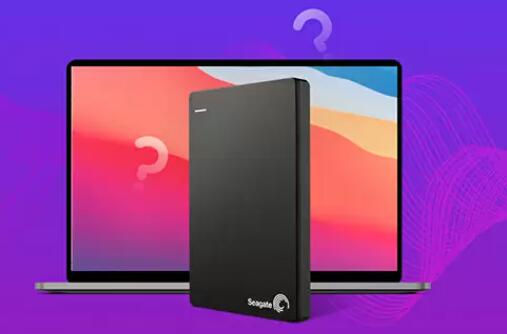External hard drives are essential tools for data storage, backup, and transfer. However, there are times when a Seagate external hard drive may not be recognized by your computer. This issue can stem from various causes, including hardware malfunctions, connection problems, or software conflicts.
1. Common Causes
Understanding why your Seagate external hard drive isn’t recognized can help streamline the troubleshooting process. Here are some common causes:
Connection Issues: Loose or damaged cables can prevent proper communication between the drive and the computer.
Power Supply Problems: Some external drives require additional power. If the drive isn’t receiving sufficient power, it may not be recognized.

Driver Issues: Outdated or corrupted drivers can prevent your computer from recognizing the external hard drive.
File System Corruption: If the file system of the drive is damaged, it may become inaccessible.
Hardware Failure: Mechanical or electronic failure within the drive can lead to recognition issues.
2. Initial Troubleshooting Steps
Before diving into more complex solutions, start with these basic troubleshooting steps:
Restart Your Computer: Sometimes, a simple restart can resolve recognition issues.
Try a Different USB Port: Plug the external hard drive into a different USB port on your computer to rule out port issues.
Use a Different Computer: Connect the drive to another computer to determine if the issue is with the drive or your system.
3. Check Disk Management
If the drive is still not recognized, check Disk Management:
Open Disk Management: Right-click on “This PC” or “My Computer” and select “Manage.” Then, choose “Disk Management.”
Locate the Drive: Look for your Seagate external hard drive in the list. It may appear as unallocated space or with a different drive letter.
Assign a Drive Letter: If the drive is detected but without a letter, right-click on it and select “Change Drive Letter and Paths,” then assign a new letter.
Initialize the Drive: If the drive is unallocated, right-click on it and select “Initialize Disk.” Follow the prompts to set it up.
4. Driver Issues
Driver problems can prevent your computer from recognizing the drive:
Update Drivers:
Open Device Manager (right-click on the Start button and select “Device Manager”).
Expand the “Disk drives” section, locate your Seagate drive, right-click, and select “Update driver.”
Choose “Search automatically for updated driver software.”
Uninstall and Reinstall Drivers:
In Device Manager, right-click on the Seagate drive and select “Uninstall device.”
Disconnect the drive, then reconnect it to reinstall the driver automatically.
5. USB Port and Cable Problems
Sometimes the issue lies with the USB port or cable:
Inspect the Cable: Check for any visible damage or wear. If possible, try using a different USB cable.
Test Different Ports: As mentioned earlier, switching to different USB ports can help identify faulty ports.
6. File System Corruption
If the file system is corrupted, your computer may struggle to recognize the drive:
Run CHKDSK:
Open Command Prompt as an administrator (search for “cmd,” right-click, and select “Run as administrator”).
Type chkdsk X: /f (replace X with your drive letter) and press Enter. This will check for and fix file system errors.
Use Third-Party Recovery Software: If CHKDSK doesn’t resolve the issue, consider using data recovery software to retrieve files from the corrupted drive.
7. Hardware Failure
If all else fails, the problem may be hardware-related:
Listen for Unusual Sounds: Clicking or grinding noises can indicate mechanical failure. If you hear these sounds, stop using the drive immediately.
Inspect the Drive: Check for physical damage, such as dents or cracks.
Seek Professional Help: If the drive appears damaged or isn’t functioning, consider contacting a professional data recovery service.
8. Data Recovery Options
If your Seagate external hard drive contains important data that you cannot access, consider the following recovery options:
Data Recovery Software: There are various software options available, such as:
Recuva
EaseUS Data Recovery Wizard
Stellar Data Recovery
Disk Drill
These programs can help recover lost or deleted files from a malfunctioning drive.
Professional Data Recovery Services: If the data is critical and the drive is physically damaged, a professional recovery service is recommended. They have specialized tools and cleanroom environments to recover data without further damage.
9. Preventive Measures
To avoid future issues with your Seagate external hard drive, consider these preventive measures:
Regular Backups: Ensure your important data is backed up in multiple locations.
Safely Eject the Drive: Always use the “Safely Remove Hardware” option to disconnect the drive.
Maintain a Stable Power Supply: If your external drive requires an external power source, use a reliable outlet or power strip.
Keep Software Updated: Regularly update your operating system and drivers to minimize compatibility issues.
About us and this blog
Panda Assistant is built on the latest data recovery algorithms, ensuring that no file is too damaged, too lost, or too corrupted to be recovered.
Request a free quote
We believe that data recovery shouldn’t be a daunting task. That’s why we’ve designed Panda Assistant to be as easy to use as it is powerful. With a few clicks, you can initiate a scan, preview recoverable files, and restore your data all within a matter of minutes.
Subscribe to our newsletter!
More from our blog
See all postsRecent Posts
- How to wipe seagate external hard drive? 2025-04-22
- Reformat a seagate external hard drive 2025-04-22
- Seagate external hard drive light blinking 2025-04-22

 Try lt Free
Try lt Free Recovery success rate of up to
Recovery success rate of up to









